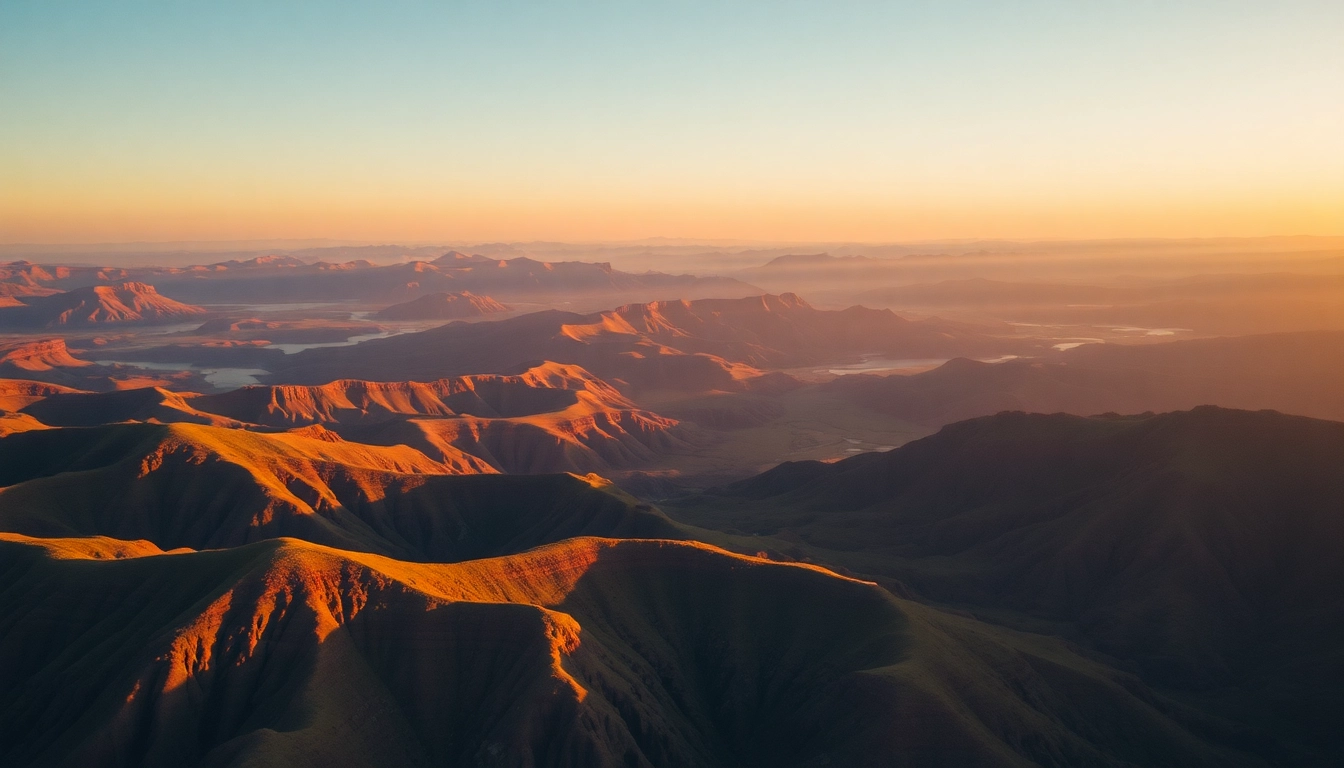The Best Software for Drone Photography Editing: Elevate Your Aerial Imagery
Introduction to Drone Photography Editing
In the rapidly evolving world of aerial photography, having a drone is just the first step toward capturing breathtaking images. The magic often truly happens in post-production, where editing transforms raw footage into stunning visuals. Whether you are a hobbyist looking to enhance your personal collection or a professional aiming to deliver high-quality imagery to clients, utilizing the best software for drone photography editing is essential. In this article, we will explore the importance of drone photography editing, the challenges faced while editing aerial shots, and provide an overview of the top software options available today.
Why Editing is Essential for Stunning Drone Photos
Editing is not merely about correcting mistakes; it is an opportunity to enhance the artistic quality of your imagery. A well-edited drone photo can reveal intricate details, portray vibrant colors, and convey emotion, making it resonate with viewers. Key reasons why editing is crucial include:
- Color Correction: Adjusting colors to make images more vibrant and true to life.
- Detail Enhancement: Sharpening images to bring out nuances that may be lost in the raw file.
- Perspective Adjustment: Fixing horizon lines and perspective distortions that can occur during flight.
- Highlighting Key Elements: Drawing attention to focal points within the image and allowing the viewer to engage with the photograph.
Common Challenges in Drone Photography Edits
Drone photography presents unique challenges that can complicate the editing process. Some of these include:
- Dynamic Lighting Conditions: Aerial shots often deal with varying light conditions that can create harsh shadows or blown highlights.
- Noise Reduction: Many drones produce images that can appear grainy in certain lighting, necessitating noise reduction techniques.
- Lens Distortion: Wide-angle lenses, commonly used in drone photography, can lead to barrel distortion that requires correction.
- Color Grading: Balancing colors accurately is essential, especially when photos are taken in different lighting scenarios.
Overview of the Best Software Options Available
With a plethora of editing software options available, selecting the right one can feel overwhelming. The best software not only meets professional needs but is also accessible for beginners. Our in-depth analysis across various platforms helps demystify the process.
Key Features to Look for in Editing Software
User-Friendly Interface for Beginners
Editing software should have an intuitive interface, allowing beginners to get started without a steep learning curve. Features like drag-and-drop functionality, simple navigation menus, and preset options can greatly enhance the editing experience. Software such as Adobe Lightroom and Skylum Luminar particularly excel in this area by providing user-friendly tools that guide users through the editing process.
Advanced Tools for Professional Photographers
For seasoned photographers, advanced features are paramount. These might include:
- Layer Management: The ability to work with layers offers professionals the flexibility to manipulate different aspects of an image separately.
- Customizable Brushes and Filters: Being able to apply localized adjustments with customizable brushes can significantly refine photographs.
- RAW File Support: Comprehensive support for RAW file formats allows for more significant edits without compromising quality.
Integration with Popular Platforms
Seamless integration with cloud services and other software can expand your editing capabilities. Programs that sync with platforms like Adobe Creative Cloud, enable backing up projects and utilizing resources across multiple applications, easing the workflow for professionals handling various projects simultaneously.
Top Recommendations for Drone Photography Editing
Best Software for Drone Photography Editing: Comparison Chart
| Software | User Level | Key Features | Price Range |
|---|---|---|---|
| Adobe Lightroom | Beginner to Advanced | Non-destructive edits, Lightroom presets, Cloud storage | $9.99/month (subscription) |
| Skylum Luminar | Beginner to Intermediate | AI-powered tools, customizable workspaces, rich filters | $69 (one-time purchase) |
| Adobe Photoshop | Advanced | Extensive editing tools, layering, advanced retouching | $20.99/month (subscription) |
| Corel PaintShop Pro | Intermediate to Advanced | Advanced photo editing, text tools, painting options | $79.99 (one-time purchase) |
| Affinity Photo | Intermediate to Advanced | One-time payment, advanced correction tools, seamless interface | $54.99 (one-time purchase) |
In-Depth Review of Leading Brands
Among the various software options, several stand apart due to their functionalities, usability, and overall user experience. Here, we take an in-depth look at a few top-ranked choices:
1. Adobe Lightroom
Considered a gold standard in photo editing, Adobe Lightroom shines with its user-friendly interface and powerful functionalities tailored for both beginners and seasoned professionals. With its cloud capabilities, users can access their projects from anywhere, making it a go-to choice for many photographers. Features like presets and batch editing simplify the workflow significantly.
2. Skylum Luminar
Skylum Luminar is known for its robust AI-driven features that make editing more intuitive. Tools such as AI Sky Replacement and AI Skin Enhancer automate challenging edits, allowing users to focus on creativity rather than tedious adjustments. It’s particularly favored by those looking for quick, striking results.
3. Adobe Photoshop
While Lightroom is primarily focused on photography, Adobe Photoshop excels in comprehensive editing tasks. It offers extensive features, including advanced retouching capabilities, which makes it suitable for detailed edits that require a delicate touch. Despite its steep learning curve, the depth of tools available makes it indispensable for professionals.
4. Corel PaintShop Pro
This software offers a balance between affordability and performance. With a one-time purchase option and a wide range of professional features, such as photo correction tools and painting options, it’s ideal for users who want robust capabilities without a subscription fee.
5. Affinity Photo
A burgeoning contender in the photo editing scene, Affinity Photo offers many advanced features for a fraction of the price you’d expect from industry giants. It boasts capabilities similar to Photoshop, including extensive retouching tools and a non-destructive editing environment. Its one-time purchase model is particularly appealing to those wary of monthly subscriptions.
User Testimonials and Case Studies
Real-world experiences provide valuable insights into the performance of photo editing software. Here, we highlight some testimonials from users across various skill levels:
Editing Techniques to Enhance Aerial Photography
Color Correction and Grading Essentials
Color correction is one of the most crucial steps in editing aerial photos, as it can drastically affect the visual appeal of an image. Key techniques include:
- White Balance Adjustment: Correcting the temperature of your photos by balancing cool and warm tones can bring a natural look to images.
- Curves and Levels: Utilizing curves and levels adjustments helps refine the contrast and brightness, allowing for a balanced look across the image.
- Color Grading: Adding specific tones to shadows, midtones, and highlights can create a distinct mood and style for your photos.
Effective Use of Filters and Effects
Filters and effects can elevate your drone photography but should be used judiciously. Here are some recommendations:
- Graduated Neutral Density Filters: These help balance exposures in skies versus land, ensuring that neither is overexposed.
- Soft Focus and Glow Effects: Often used to create a dreamy effect, these can enhance landscapes and atmospheric shots.
- Sharpening Tools: Carefully applied sharpening can bring out details in aerial shots, making the image more vibrant and engaging.
Saving and Exporting Final Edits
After completing your edits, exporting your images in the correct format is crucial for quality and usability. Consider these export settings:
- File Formats: Use JPEG for web use and sharing, while TIFF or PSD formats are more suitable for prints.
- Resolution Settings: Keep the resolution high for prints (300 DPI) while using lower settings (72 DPI) for online imagery.
- Color Profile: Use sRGB for web images and Adobe RGB for prints to ensure accurate color rendering.
Conclusion: Choosing the Best Software for Your Needs
Evaluating Your Specific Requirements
When selecting editing software, assess your editing skills, budget, and the type of images you work with. Beginners might prefer user-friendly interfaces, while professionals may seek software with advanced tools and extensive functionalities.
Budget Considerations for Drone Editing Software
Editing software costs vary widely, from free options to subscription models and one-time purchases. It’s essential to weigh the features each software offers against its price and your budget. In some cases, investing in a premium software tool can yield better results and efficiencies in the long run.
Resources for Continued Learning in Drone Photography
The field of drone photography and editing is ever-evolving. Resources such as online workshops, photography communities, and tutorial websites can provide new techniques, tips, and insights into the latest editing software. Staying updated with trends will not only enhance your skills but will also ensure you are producing timely and relevant work for your audience.

